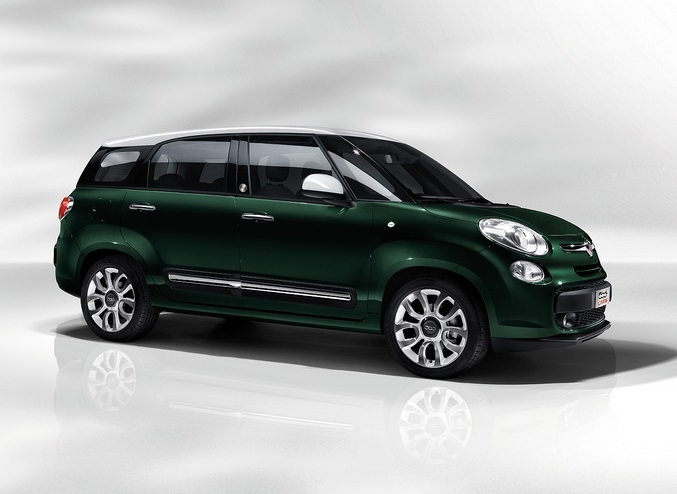
Lexus IS - Japanese offensive
The largest D-segment manufacturers have another reason to worry - Lexus has introduced the third generation of the IS model, built from scratch. In the fight for buyers' wallets, this is not only a cheeky look, but also excellent driving performance. Will this car win the market?
The new live IS looks great. The first thing we notice is the separation of the headlights from the L-shaped LED daytime running lights, as well as the grille familiar from the older GS model. On the side, the designers chose an embossing that stretches from the sills to the trunk line. The car just stands out in the crowd.
The new generation, of course, has grown up. It has become 8 centimeters longer (now 4665 millimeters), and the wheelbase has increased by 7 centimeters. Interestingly, all the space gained through the extension was used for rear seat passengers. Unfortunately, the relatively low roofline can make it difficult to accommodate taller people.
But once everyone is in the car, no one will complain about the materials or the quality of the finish - it's a Lexus. The driver's seat is placed extremely low (20 millimeters lower than in the second generation), which makes the cabin seem very massive. In terms of ergonomics, there is nothing to complain about. We immediately feel at home. The A/C panel is not a module used in cheaper Toyota models, so we don't have the impression that it was carried over from the Auris, for example. We will make any changes thanks to electrostatic sliders. The problem is their sensitivity - a one degree rise in temperature requires a soft touch with surgical precision.
For the first time in the Lexus IS, the controller resembles a computer mouse known from the brand's flagship models. It is thanks to him that we will perform each operation on a seven-inch screen. Using it is not particularly difficult while driving, of course, after a short workout. It is a pity that the place where we put the wrist is made of hard plastic. The most affordable version of the IS250 Elite (PLN 134) comes standard with speed-dependent power steering, voice control, power windows front and rear, drive mode selector, bi-xenon headlights and driver's knee pads. It is worth choosing cruise control (PLN 900), heated front seats (PLN 1490) and white pearl paint (PLN 2100). The IS is equipped with a hood that rises 4100 centimeters in the event of a collision with a pedestrian at speeds below 55 km/h.
The most expensive version of the IS 250 is the F Sport, available from PLN 204. In addition to the latest gadgets and on-board security systems, it features a special design of eighteen-inch wheels, a redesigned front bumper and a different grille. Inside, leather seats (burgundy or black) and an instrument panel inspired by the one used in the LFA model deserve attention. Just like in a supercar, changing instrument settings looks amazing. Only in the F Sport package we can order the 100-speaker Mark Levinson audio system, but it requires an additional payment of PLN 7.
Lexus opted for a very modest range of engines. There are two versions of IS on the road. Weaker, i.e. Hidden under the designation 250, it has a 6-liter V2.5 gasoline unit with variable valve timing VVT-i. It will only be available with an automatic six-speed transmission sending 208 horsepower to the rear wheels. I had the opportunity to spend the whole day with such a car and I can say that 8 seconds to “hundreds” is a quite reasonable result, the transmission, thanks to the paddles on the steering wheel, does not constrain the driver, and the sound at high speeds is simply amazing. I could listen to it endlessly.
The second drive option is a hybrid version - IS 300h. Under the hood you'll find a 2.5-liter in-line (181 hp) running in Atkinson mode to reduce fuel consumption and an electric motor (143 hp). In total, the car has a power of 223 horses, and they go to the wheels through an E-CVT continuously variable transmission. The performance has not changed much (0.2 seconds in favor of V6). Thanks to the knob located in the central tunnel, you can select from the following driving modes: EV (energy-only driving, great for urban conditions), ECO, Normal, Sport and Sport +, which further increases the car's rigidity. suspense.
Of course, we lose 30 liters of trunk volume (450 instead of 480), but fuel consumption is half as much - this is the result of 4.3 liters of gasoline in mixed mode. The hybrid is equipped with Active Sound Control, thanks to which we can adjust the sound of the engine according to individual preferences. Unfortunately, the manufacturer did not provide the IS with a diesel unit exactly the same as that of the much larger GS model.
Will the third generation of IP seriously threaten competitors? Everything indicates that this is so. The importer himself was surprised by the demand - it was predicted that 225 units would be sold before the end of the year. At the moment, 227 cars have already found new owners in the pre-sale. The Japanese attack on segment D promises to fight for every customer.

